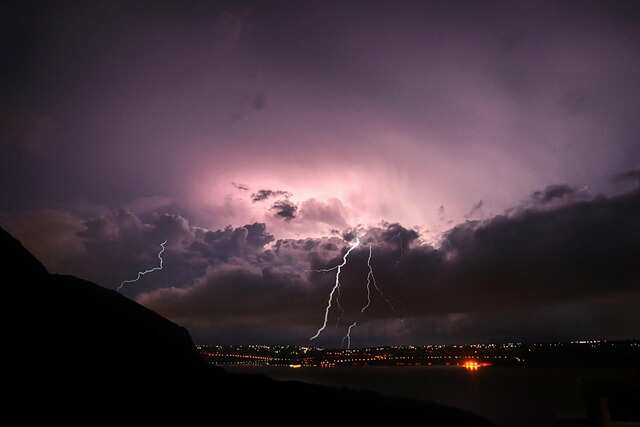Wipha’s Path of Destruction Nears China
Wipha Storm Approaches, China braces as Wipha storm approaches from the western Pacific. After pounding Taiwan and the Philippines with strong winds and torrential rain, the storm is intensifying. Officials warn it may reach typhoon strength before making landfall along southern China’s coast.
Wipha is the sixth named storm of the Pacific typhoon season. It caused damage and disruption in Taiwan and the Philippines and is now barreling toward Hong Kong, Fujian, and Hainan provinces. Flights are being canceled. Ferry routes are shut down. Major bridges and ports are closing.
In this post, we’ll break down the latest developments, show key examples of the storm’s impact, explain how storms like Wipha form and strengthen, and help you prepare before disaster strikes.
Wipha Storm Approaches: Wipha’s Impact in Taiwan and the Philippines
Winds Topple Structure in Quezon City
As Wipha storm approached China, it crossed the Philippines, bringing heavy rains and strong winds. In Quezon City, north of Manila, a billboard-like structure collapsed onto a parked truck. The strong gusts caused the frame to snap, showing just how deadly even brief encounters with these storms can be.
As Wipha Storm Approaches Taiwan’s East Coast Soaked
Taiwan’s Central News Agency reported over 20 centimeters (8 inches) of rain in Hualien and Taitung counties. Coastal areas saw roads flooded and ferry routes suspended. More than a dozen flights were canceled as Wipha brushed past the island’s southern edge.
Ferries Canceled in Fujian Province
In anticipation of worsening conditions, ferry services were canceled across Fujian Province on China’s east coast. Waves churned by the storm made sailing unsafe. The cancellations stranded some travelers but potentially saved lives.
Cathay Pacific Cancels Flights in Hong Kong
However, in Hong Kong, the impact is already being felt. Cathay Pacific announced that all flights between 5 a.m. and 6 p.m. Sunday would be delayed or canceled. Also, the airline is waiving change fees, acknowledging the scale of the disruption.
Massive Bridge Closure Between Hong Kong and Macao
A key piece of infrastructure — the 30-kilometer bridge linking Hong Kong and Macao — will close overnight. Also, authorities fear high winds and storm surges could make travel across the bridge extremely dangerous.
Ports Close in Hainan Island
In Hainan province, known for its beach resorts, three major ports will suspend operations. Also, the closure starts Saturday night in Haikou, the capital. Officials fear the storm may bring surging tides and strong winds, creating hazards along the coast.
Wipha Storm Approaches: How Storms Like Wipha Form and Why China Is at Risk
1. How Do Tropical Storms Form?
Tropical storms like Wipha form over warm ocean waters. But, when the surface temperature exceeds 26°C (78.8°F), warm air begins to rise. This creates a low-pressure area, which pulls in surrounding moist air. As that air rises and cools, it releases heat and forms storm clouds.
2. Why the Western Pacific Sees So Many Storms
The western Pacific Ocean is a hotspot for tropical cyclones. The warm waters and humid air provide ideal conditions. That’s why China, Taiwan, Japan, and the Philippines face several storms each year.
3. What Makes Wipha Especially Dangerous?
- Rapid Intensification: Wipha may reach typhoon strength before landfall.
- Widespread Rainfall: Over 20 cm of rain is forecast in some Chinese regions.
- Wind Damage: Sustained winds exceed 100 kph, with gusts nearing 130 kph.
- Storm Surge Risk: Coastal cities could face flooding, especially low-lying areas.
As China braces as Wipha storm approaches, emergency teams are preparing for all scenarios.
4. The Role of Climate Change
In addition, climate change has warmed oceans globally. Warmer waters create stronger and more frequent storms. Scientists warn that as global temperatures rise, so does the intensity of tropical storms. But, Wipha is part of a growing pattern.
How-To: Prepare for Tropical Storm Wipha in China
1. Stay Informed with Accurate Updates
Only rely on official weather alerts from national agencies or trusted news sources. Follow:
- The China Meteorological Administration
- Hong Kong Observatory
- Cathay Pacific Travel Alerts
- Local government announcements
Also, these sources will tell you when to evacuate, seek shelter, or stay indoors.
2. Prepare Emergency Supplies
First of all, make sure your household has:
- Flashlights and extra batteries
- First aid kit
- Bottled water and non-perishable food for at least 3 days
- Battery-powered radio
- Phone power banks
- Important documents in waterproof containers
Preparation is key as China braces as Wipha storm approaches with increasing intensity.
3. Know Evacuation Routes
Additionally, if you live in a flood-prone or coastal area, know your evacuation routes. Practice them with your family. Don’t wait for the last moment.
4. Wipha Storm Approaches Secure Your Home
Before the storm hits:
- Bring outdoor furniture inside
- Reinforce windows with storm shutters or tape
- Unplug electronics
- Check your roof and drains
These actions reduce property damage.
5. As Wipha Storm Approaches Avoid Risky Behavior
Do not:
- Walk through flooded areas
- Drive during high winds
- Swim or surf during storm warnings
Also, storm surges and flying debris pose real dangers. Stay safe, not brave.
Wipha Storm Approaches: A Storm China Cannot Ignore
In addition, China braces as Wipha storm approaches, with flight cancellations, port shutdowns, and high alert in major cities. After battering the Philippines and Taiwan, Wipha is now targeting southern China. Also, coastal provinces are taking no chances. From ferry suspensions in Fujian to airport closures in Hong Kong, the response is swift and necessary.
Storms like Wipha are becoming more intense and unpredictable. Also, this one may weaken after hitting land, but its damage will be felt across borders. Hainan, Vietnam, and Laos will also feel the effects next.
First of all, we must not ignore the lessons from Wipha. Emergency preparedness saves lives. Timely information prevents chaos. And long-term climate policies are essential to reduce future storm risks.
✅ Prepare Your Home & Raise Awareness
Stay updated. Share this post. Prepare your home. Help raise awareness before Wipha makes landfall.
Also, if you’re in a vulnerable area, follow official evacuation orders. But, take this storm seriously. Your safety — and your family’s — depends on the steps you take now.

